- Ponta da Piedade
- Praia da Dona Ana Beach
- Praia do Camilo Beach
- St. Anthony Church and Lagos Museum
- Slave Market
- Meia Praia Beach
- Praia dos Estudantes Beach
- Ponta da Bandeira Fortress
- Lagos Castle
- Day Trip to Sagres
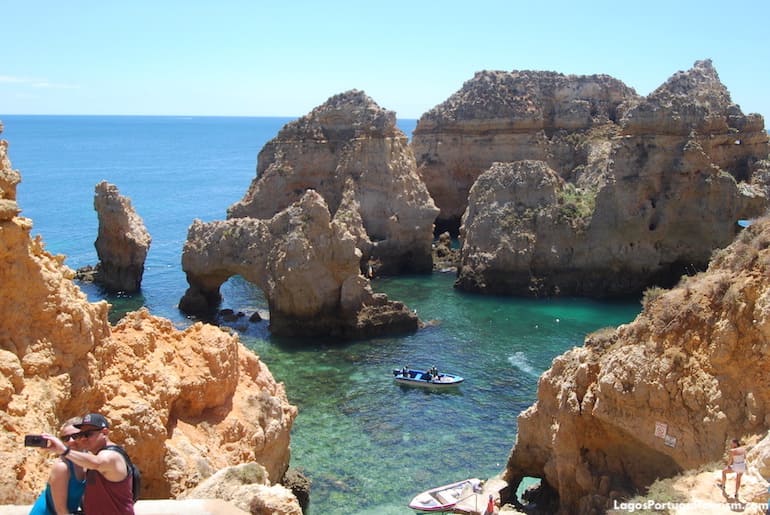
This headland with a series of magnificent rock formations is one of the highlights of the entire Algarve region, and therefore the most visited sight in Lagos. From the clifftop, from the scenic boardwalk or by the sea at the bottom of a long staircase, you have breathtaking views of the natural wonder, sculpted for thousands of years by the wind and the waves. For close-up views, many go on kayak or boat tours, which allow access to hidden caves and grottoes. This is also a stunning sunset spot, when the light gives the ocher rocks an extra yellow or golden tone.
See the Ponta da Piedade Guide.
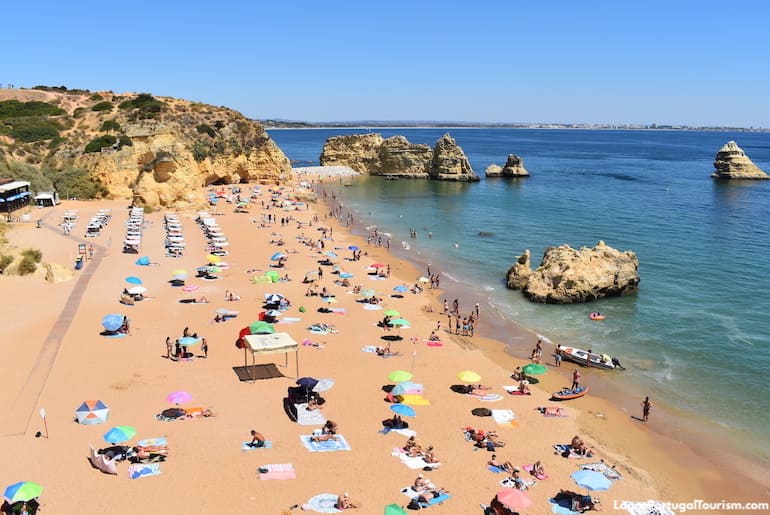
One of Portugal’s most famous beaches, Dona Ana stands out for its golden rocks, high cliffs, and usually calm and clear waters. The cliffs protect it from the winds and currents (so it’s good for swimming and snorkeling) and there are breathtaking views from the top, on the northern and southern sides.
See the Praia da Dona Ana Guide.
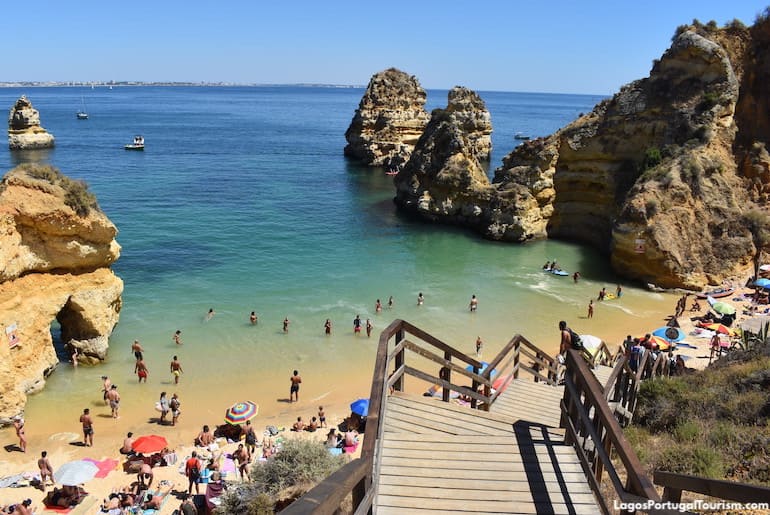
Lagos' most beautiful beach is hidden down a steep cliff, but a long wooden staircase takes you directly to the sand. Everyone stops on their way down to take selfies, as there’s a picture-perfect view over the crystal-clear water and the different rock formations. It’s actually divided into two sections, separated by a cliff but connected by a tunnel. The clean, shallow and usually calm waters also make it the beach for snorkeling.
See the Praia do Camilo Guide.
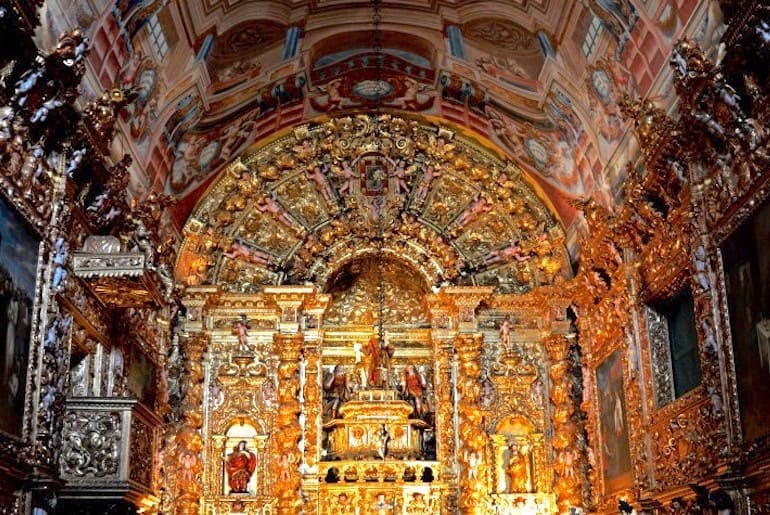
A plain church from outside hides a rich interior that’s considered one of Portugal’s finest examples of gilded woodwork. The golden carvings mix with blue-and-white tile panels and a beautifully painted ceiling, while in the former sacristy is a museum dedicated to the art, history and culture of Lagos. Its collection of pieces goes back thousands of years, from the city’s first Celtic and Phoenician settlers to the 20th century (it includes prehistoric standing stones, Roman mosaics and tiles).
See the St. Anthony Church and Lagos Museum Guide.
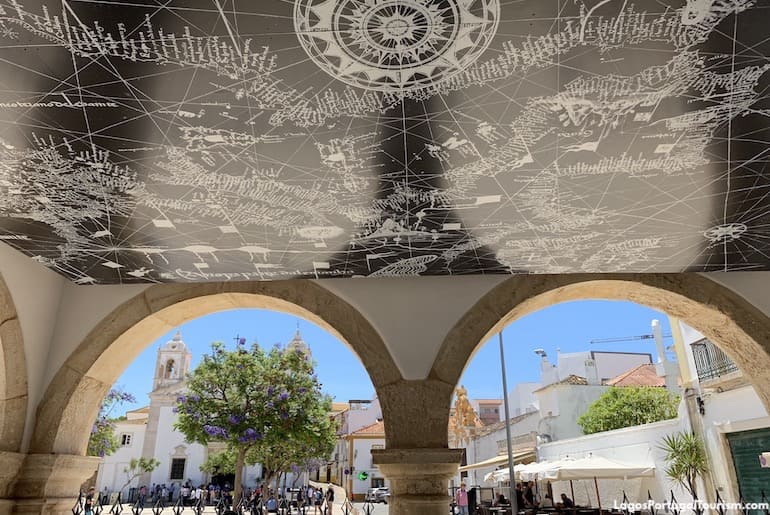
When Prince Henry the Navigator sent his men to map the coast of Africa in the hope of finding a maritime route to Asia, he ended up opening the way to European exploration and global trade. At first, the traded goods were spices, silk and gold, but after their colonization of the “new world,” Europeans realized that the slave trade would also be profitable. The Portuguese took Africans to Lagos and sold them to other European empires or sent them to Brazil. The building where these transactions took place is now a small museum, with displays in Portuguese and English explaining the trade routes, how the slaves were taken across the Atlantic in appalling conditions, how there were slave uprisings in as early as the 1500s, and how Lagos grew as a major port.
See the Slave Market Guide.
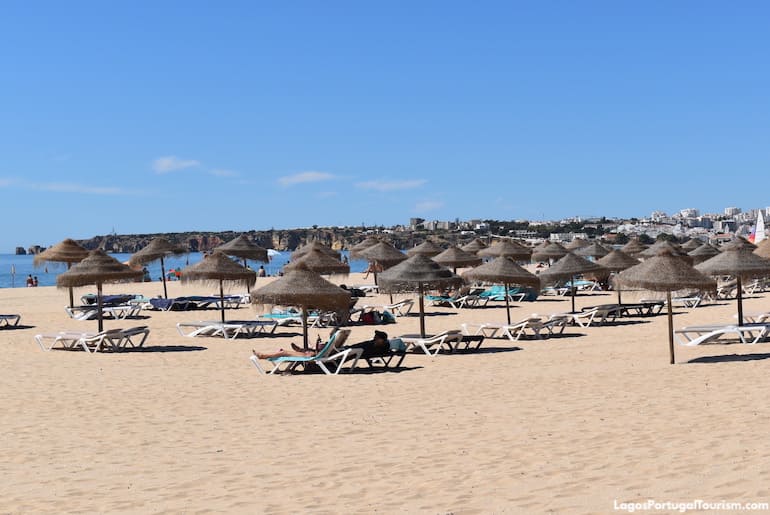
The biggest beach in Lagos stretches for over four kilometers (2.5 miles), and although its western side can get crowded with locals and tourists, to the east it’s calm, nearly deserted and even an unofficial nude beach. It offers a view of the city’s skyline and coast, and has a number of bars and restaurants. Depending on the tides and weather conditions, the water can be calm and good for swimming, or have waves good enough for surfing.
See the Meia Praia Guide.
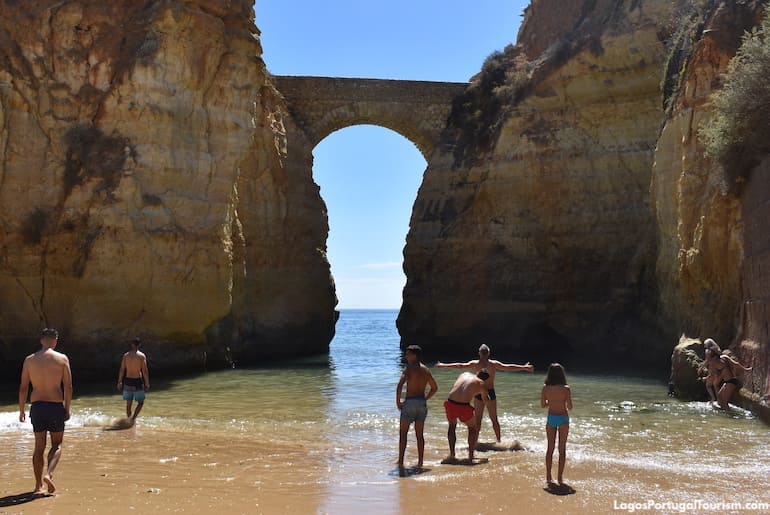
This beach features a much-photographed arch connecting two rocks, so it has become one of the most popular with tourists. The central location also helps, as do its usually calm waters. It’s quite small so there’s often not much space to spread a towel, but the scenery makes it worth a visit.
See the Praia dos Estudantes Guide.
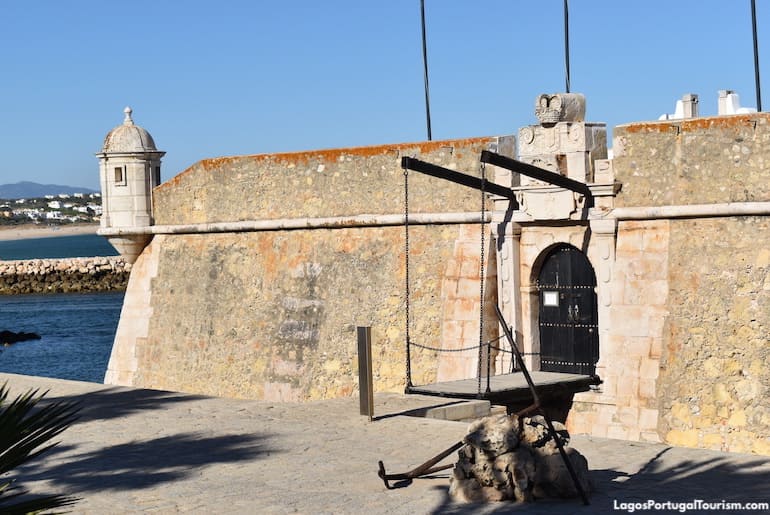
The port of Lagos was protected by two major fortresses in the 16th and 17th centuries, and this was one of them. The other was completely destroyed by the great earthquake of 1755, but Ponta da Bandeira was soon restored. It preserves a small chapel covered in 17th-century tiles, and shows temporary and permanent exhibitions related to the history of Lagos. From the top, visitors can admire a view over the neighboring beaches.
See the Ponta da Bandeira Fortress Guide.
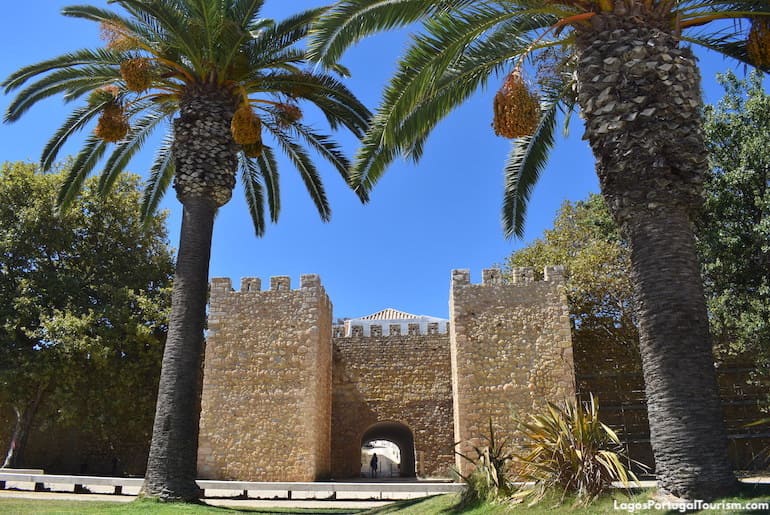
When Lagos became the capital of the Algarve region, a castle was built as the governor’s residence. It was connected to the town walls (whose origins go back to Roman times), and was defended by the Ponta da Bandeira fortress in front. Only a tiny section of the walls and the castle still stand. They’ve been restored over the years, and a gateway between two watchtowers (known as “São Gonçalo Gate”) is one of the entrances to the Old Town. What’s left of the castle became a hospital and isn’t open as a tourist attraction, but you may admire a Manueline (Portuguese Gothic) window from outside. It’s said that it was from this window that King Sebastião spoke to the assembled nobility in 1578, before joining Portuguese, Spanish, German and Dutch troops on a disastrous crusade to Christianize North Africa (he ended up killed in El-Ksar el Kebir in Morocco). The landscaped area around the castle has a statue of Gil Eanes, the local explorer who was the first European to navigate past Cape Bojador, a major breakthrough in discovering a maritime route to the East.
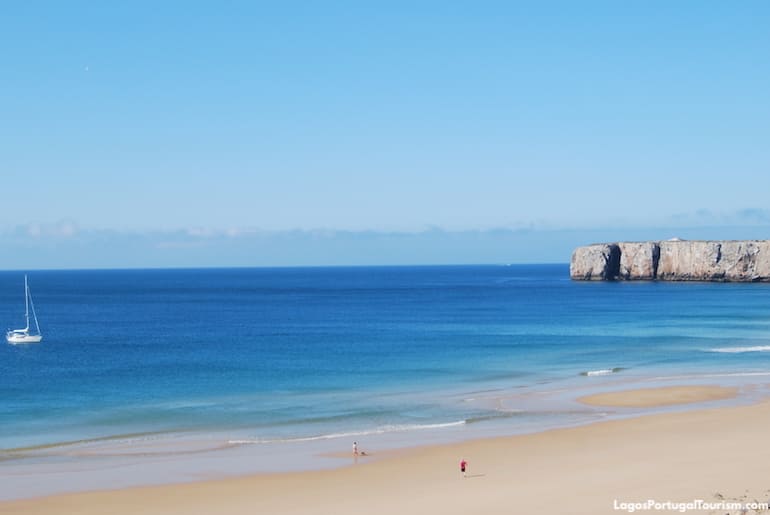
Known as “Sacrum” or “sacred” to the Romans, Europe’s southwesternmost point is located to the west of Lagos. It was believed to be the edge of the Earth, and still has a betwiching “end of the world” feel. On the dramatic promontory is Prince Henry the Navigator’s fortress, but there are also wild beaches and breathtaking views (especially at sunset) from the top of the cliffs. They’re all reasons why a visit to Lagos isn’t complete without a trip to Sagres.
See the Sagres Day Trip Guide.
Other Popular Attractions in Lagos
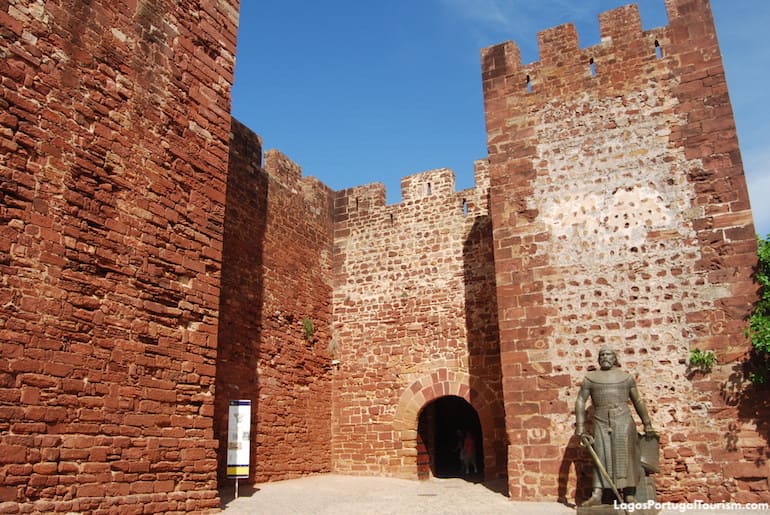
Day Trip to Silves

Day Trip to Silves
Algarve’s biggest and best-preserved castle is located in Silves, to the north of Lagos. It dates from when the now sleepy town was actually the capital of the region and a rich Moorish city. It’s visited by those looking to take a break from the beaches and experience inland Algarve.
See the Silves Day Trip Guide.
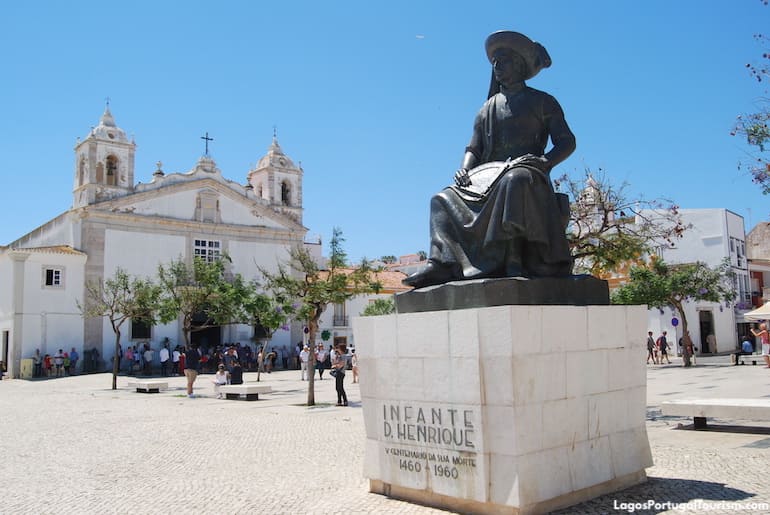
Santa Maria Church
It was completed in 1498, but like almost every other building in Lagos, this church collapsed in the earthquake of 1755. Most of it had to be rebuilt, but was later nearly destroyed once again, in a fire. It retains a Renaissance doorway, but almost everything else is the result of a restoration in the late 1800s. For this reason, it doesn’t have a rich interior like that of the church of St. Anthony, but many tourists still peek inside, as it faces the Slave Market, in the town’s main square. This is where most of Lagos’ religious services take place, attracting many locals on Sunday mornings.